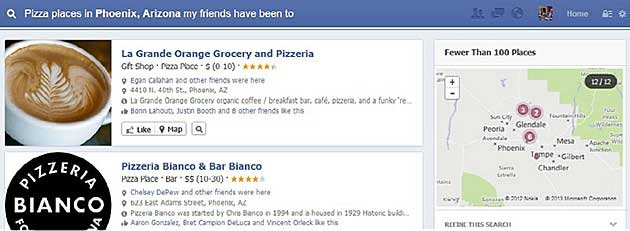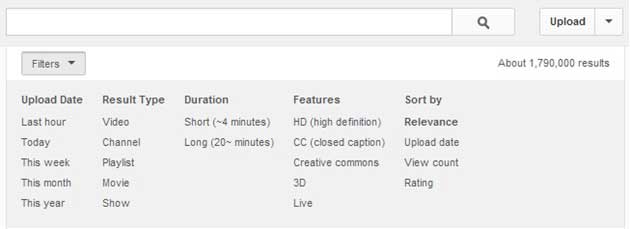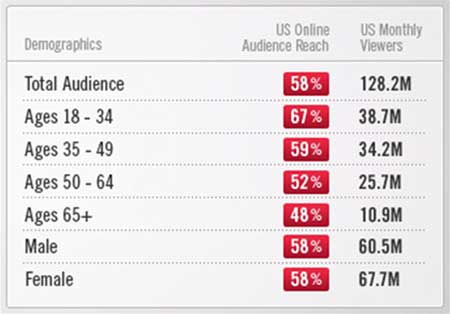Social media accounts for 18% of all time spent online. That number is only increasing as users turn to social networks for much more than just social interaction.
Such continued reliance on social media has led to the expansion of advanced social capabilities—specifically, search. A crucial component in all aspects of the Web, search features allow users to inquire, discover, learn, and connect in all personal and professional facets.
Many social networks include internal search features that index solely their own content. That barely skims the surface of search possibilities within social media, and the launch of Facebook's Graph Search prompts immediate recognition of the awe-inspiring potential.
The combination of search and social is revolutionary in how it uniquely blends the way people think, interact, and communicate. Users flock to specific sites for different reasons; for instance, they go to Facebook to connect with friends and to YouTube to watch the latest music video. Those lines have begun to blur, however, as social networks enrich their offerings to increase the time that users spend on their site.
According to Search Engine Journal, "2013's emerging trends will focus on how to measure, analyze, and engage audiences effectively on social networks." Search will play a large part in that, as user engagement means providing as many on-site resources as possible.
Facebook, YouTube, Twitter, Pinterest, and Google+ are five of the largest social networks today. We've examined each of their search capabilities, focusing on three major points: what is offered in social search on each network, which demographics are searching, and how to optimize content to better fit search needs.
The social network giant has hit the one billion monthly active user mark. In fact, if Facebook were a country, it would have the third largest population, right behind China and India.
Engagement on the site has never been higher, with 2.7 billion likes and 250 million photos uploaded every day. Not surprisingly, Facebook is working toward blending its social program into search, as highlighted by the introduction of Graph Search.

Facebook Graph Search, the friend-based search function that lives at the top of every Facebook page, will revolutionize the way Internet users search. With insight into personal profiles, Facebook can provide answers to questions traditional keyword-focused engines cannot, such as "What movies do my friends in Denver like?" Along with social context and location, results can factor in "likes," ratings, pages, categories, and more. Relationship strength is also considered, so engagement among users, friends, and pages matters. For everything Facebook can't answer, there's Bing—especially when searchers prefer to view profile comments and photos.
Who Searches on Facebook?
In a surprising twist for a social network that began as a private site for college students, 65% of Facebook users are now 35 or older. Of course, the average age is still slightly younger—around 30 years old. As for gender, 53% of users are male.
Some 80% of social media users say they prefer to connect with brands via Facebook as opposed to the brand website. The search intent of those users varies greatly—from making personal connections, to looking up old and new friends, places, hobbies, interests, activities, events, dining, and entertainment. As more businesses join Facebook, users no longer have to leave the site to find information on search engines—especially when they already prefer to view comments and photos on your profile.
Optimizing for Facebook Search
- Content planning: Facebook content includes four main types of popular posts: topical, visual, expressive, and target-specific content. Each appeals to a different target audience but stays true to the basis of Facebook marketing: keep it engaging and timely. Understanding target audiences prior to developing content results in better user engagement across the board. Images are also important—44% of users are more likely to engage with brands if they post pictures.
- Brand search optimization: When optimizing a Facebook page, to increase visibility, you should complete all information categories, including location, related links, and regular updates. Profile pictures also appear in the search results and should reflect a recognizable brand name or logo.
- Content optimization: 77% of B2C companies and 43% of B2B companies have acquired customers from Facebook. Facebook pages require proper optimization before metrics such as likes, comments, and shares convert into sales and revenue. Brands should also take advantage of Facebook-specific features such as the timeline, highlighting company milestones and telling a story.
Such simple tactics will help brands build authenticity and connect with fans through graph search. The people-powered results put even more emphasis on current fan and potential fan identity.
Brands have many opportunities to connect with audiences via search by way of Facebook Ads, Promoted Posts, and Sponsored Stories. For example, the first search results to show up on the site are "top hits," but sponsored is directly below—typically above groups, pages, and people.
By aggregating user data through Graph Search, Facebook has set a new precedent for social network capabilities. Although it's still fairly new, the features are predicted to continue advancing, giving users more of a reason to stay on the site for all Internet needs. Facebook is certainly one to watch for all aspects of blended search and social marketing.
YouTube
When you hear someone reference a "search engine," you typically think of Google, not YouTube. Yet the social network is actually the No. 2 search engine in the world.
Internet users turn to the site for the same reasons they would any other giant knowledge network—to get more information and look up the latest digital trends. YouTube has over 800 million unique visits each month, with over 4 billion videos watched monthly. Every minute, over 72 hours of video are uploaded to the site.
YouTube is positioned to accommodate all growing social demands from internet users—related to music, news, education, fashion, comedy, television, etc. User searches on YouTube can be filtered by upload date, result type, duration, and features. Sorted results by relevance, date, view count, and rating offer a variety of discovery metrics:

The video site is evolving from a simple place to watch videos to a multimedia resource, as is evident from the increasing search queries. For example, users who know they want to watch a how-to video on making sushi or to see the latest Eminem and Rihanna collaboration can cut out those other search engines as the middleman.
Who Searches on YouTube?
The largest age demographic reachable on YouTube is 18-34 year-olds. The male to female ratio is fairly even throughout:

Marketing to these GenX and Millennial Internet users requires a thorough understanding of how a product or service will fit in with their needs and interests. If the objective is to target multiple audiences, links embedded within other search and social platforms can direct large groups of potential customers to corresponding YouTube channels.
Search intent on YouTube varies greatly, ranging from music, TV, and entertainment to games, sports, and education. Viral videos are perhaps the holy grail of all video marketing—and equally elusive. The goal of all social strategies is to inspire users to share, increasing your brand visibility. It's a delicate mix of content, relevance, cleverness—and luck.
More specific video types, such as how-to and industry tips have also garner success. For many brands, instructive videos can engage current and potential customers, and establish higher visibility and authority; 100 million people take a social action on YouTube (likes, shares, comments, etc.) every week. YouTube offers sample demographic profiles to help better understand your audience.
You should determine how your target audience will use YouTube's search features. Doing so involves keyword research and the monitoring of trending topics.
Optimizing for YouTube Search
- Content planning: In 2012, videos tagged "Obama" or "Romney" on YouTube garnered 2.7 billion total views. Over 13 million people tuned in to the 70-hour live stream of Hurricane Sandy on the Weather Channel. "Gangnam Style" became the site's most viewed music video. The diverse range of content receiving impressive views and feedback illustrates the power of YouTube. Users turn to it to learn more during trending current events. And, more often than not, those users rely heavily on YouTube's integrated search features. Considering 70% of YouTube traffic comes from outside the US, incorporating global search engagement—when relevant—can make a large impact.
- Brand search optimization: When creating a YouTube channel, brands should keep their channel names as simple and direct as possible: Creativity doesn't necessarily impress users when they enter a query with a business name and don't find what they're looking for. An optimized YouTube page for search requires a complete "about" section with related text, captions, and transcripts. Including appropriate links can boost channel and video visibility.
- Content optimization: Content should entice users to subscribe, but first they need to find what they're looking for, which is why SEO keyword optimization and tagging are important. Companies should use brand and industry-related keywords within their channel and video descriptions, titles, and tags. An important note: Google truncates titles with more than 66 characters, so targeted keywords should be placed toward the front. For tagging, include between 5 and 10 terms that best describe the video.
As in all marketing, you should practice what you preach, so don't use misleading titles or tags and don't forget the ultimate goal: building a loyal fan base. Someone searching "how to cook a holiday turkey" will not be happy when they are led to your kitchen-product plug (but no instructions on cooking turkey). That is likely why YouTube recently rolled out changes to its algorithm, with a heightened focus on time watched and engagement vs. initial clicks.
Note: A version of this article originally appeared on the ZOG Digital Blog.



